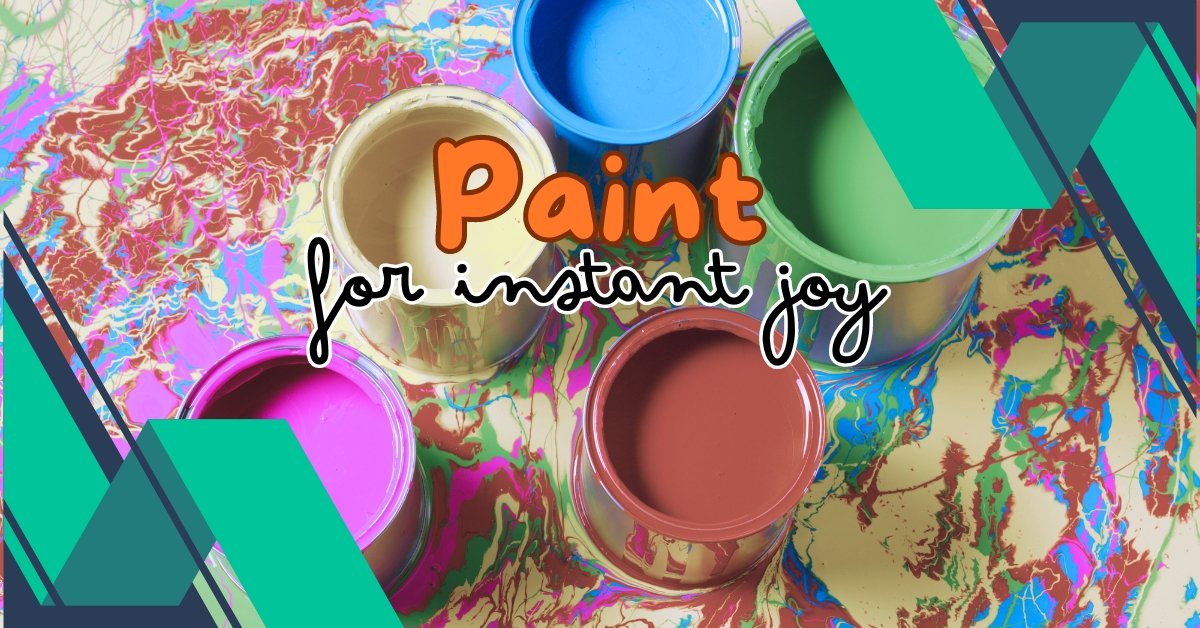Painting is a wonderful way to unleash creativity and unwind. Whether you’re a beginner or just looking for inspiration, there are plenty of easy things to paint that can enhance your skills and boost your confidence. From simple landscapes to abstract designs, the possibilities are endless. This guide will provide you with fun ideas, tips, and techniques to help you get started on your artistic journey. Let’s explore the easiest subjects and mediums that will make painting enjoyable and rewarding!
What is the Easiest Thing to Paint?
One of the easiest things to paint is nature. Simple landscapes, flowers, or even fruits can be a great starting point. For instance, painting a sunset involves blending colors, which can be very forgiving for beginners. You can layer shades of orange, pink, and purple to create a beautiful sky.
Another easy subject is abstract art. Abstract painting allows you to express emotions and ideas without focusing on realism. You can use various colors and shapes freely, which makes it a low-pressure option for beginners. Just splash some paint on the canvas and see where it takes you! Abstract art encourages exploration and creativity, allowing you to discover your style without constraints.
If you prefer more defined subjects, consider painting everyday objects. A simple coffee cup, a vase, or even a piece of fruit can make excellent subjects. These items are usually easy to replicate and help you practice basic shapes and shading. With practice, you’ll find that the more you paint, the more you’ll develop your unique artistic voice.
What is the Easiest Art to Start With?
When starting your artistic journey, consider watercolor painting. Watercolors are forgiving and easy to work with. The fluid nature of the paint allows for gentle blending and soft transitions. You don’t need to invest in expensive materials; a basic watercolor set, some brushes, and paper are all you need to get started.
Acrylic paint is another beginner-friendly medium. Acrylics dry quickly and can be easily layered, allowing you to create vibrant artworks without the long drying times associated with oil paints. They are versatile, letting you explore various techniques and styles, from detailed portraits to abstract designs. With just a few brushes and a palette, you can jump right in and start experimenting.
If you’re looking for a fun, relaxing way to paint, try adult coloring books. They offer pre-drawn designs that you can fill in with your chosen colors. This method helps you practice color theory and shading without the pressure of creating an original piece. Overall, these mediums provide a welcoming introduction to painting, allowing you to discover your artistic side.
What is Easier to Paint With?
Choosing the right medium can make a huge difference in your painting experience. As mentioned earlier, watercolor and acrylic paints are excellent options for beginners. However, if you want something even simpler, consider using markers or colored pencils. These mediums require no setup or cleanup, making them easy to use anywhere.
Oil pastels are another fantastic choice for those who want to create vibrant artworks without the fuss of traditional painting. They blend smoothly and are great for adding texture. You can easily experiment with layering colors to achieve different effects. These tools allow for easy mixing and can be used on various surfaces, making them versatile.
If you enjoy creating texture in your work, consider using a palette knife. This tool allows you to apply paint in thick layers, creating a three-dimensional effect. It’s a fun way to experiment with colors and forms, and it’s perfect for abstract art. Ultimately, the best medium is the one that inspires you. So try different options and see which one resonates with your style!
What Should I Paint When I’m Bored?
Finding inspiration when you’re bored can be challenging. One popular option is to paint seasonal themes. For example, create a winter scene with snowflakes, a vibrant spring garden, or a cozy autumn landscape. These themes are not only easy to paint but also allow you to celebrate the beauty of each season. You can explore different color palettes and techniques as you capture the essence of the time of year.
You can also try painting a self-portrait or a portrait of a loved one. This exercise helps you practice proportions and colors, and it can be a fun way to reflect on your personality or those close to you. It doesn’t need to be perfect; the aim is to enjoy the process.
If you’re still feeling uninspired, consider painting quotes or words that resonate with you. Typography art can be a fun challenge and allows you to express your thoughts visually. Choose a meaningful phrase and experiment with different fonts and colors. These ideas can help spark your creativity and get you painting, even on those uninspired days.
Tips for Painting with Ease
As you embark on your painting journey, keep these tips in mind to make the process smoother. First, gather all your materials before you start. Having everything in one place will minimize distractions and help you focus on your art. This preparation can enhance your creative flow and allow you to dive right in.
Next, don’t be afraid to make mistakes. Art is all about exploration, and even experienced artists have off days. If you don’t like what you’ve painted, consider it a learning opportunity. You can always paint over it or transform it into something new. Embrace the imperfections, as they often lead to the most surprising and delightful outcomes.
Practice regularly. The more you paint, the more you’ll develop your skills and style. Set aside time each week to explore new techniques or revisit old favorites. Consistency is key to improving as an artist. Additionally, look for inspiration everywhere. Nature, books, music, and everyday life can spark creativity. Keep a journal to jot down ideas or sketch what you see. This practice will help you build a visual library to draw from when you need a painting prompt.
Creative Painting Ideas for All Ages
Painting isn’t just for adults; it’s a fantastic activity for kids too. Simple projects, like finger painting or using sponges, can be enjoyable for younger artists. Consider organizing a family painting night where everyone can create their masterpiece. This shared experience fosters creativity and strengthens bonds. Kids love expressing themselves, and painting allows them to do just that.
For older children and teens, encourage them to explore different mediums. They can try watercolor landscapes, acrylic abstract art, or even graffiti-style painting. Each medium offers a unique way to express individuality and creativity. You can also challenge them with themed painting contests to spark their imagination and enthusiasm.
Group painting classes are a fun way to connect with others while learning. Many local art studios offer workshops for beginners, where you can learn from experienced instructors and meet fellow art enthusiasts. These classes can boost confidence and provide a supportive environment for creative growth. Overall, painting can be a delightful family activity that encourages everyone to unleash their creativity.
The Benefits of Painting for Relaxation
Painting can be a powerful tool for relaxation and mindfulness. Engaging in art allows you to focus on the moment, helping to reduce stress and anxiety. The repetitive motions of painting can be meditative, giving your mind a break from daily worries. By immersing yourself in colors and shapes, you can find a sense of calm that is hard to achieve elsewhere.
Moreover, creating art releases dopamine, a chemical associated with pleasure and reward. This means that the act of painting can boost your mood and overall well-being. Whether you’re painting alone or with friends, it’s a great way to unwind and tap into your creative side.
Consider setting up a cozy painting corner at home. Surround yourself with inspiring materials, a comfortable chair, and good lighting. Make it a habit to paint regularly, allowing yourself the freedom to explore and express your emotions. Creating this environment can make painting a cherished routine that contributes to your mental health and happiness.
Conclusion
In conclusion, painting is a delightful way to express your creativity and enjoy the process of making art. From simple subjects like landscapes and everyday objects to beginner-friendly mediums like watercolor and acrylics, there are countless easy things to paint that can inspire you. Remember to embrace mistakes, practice regularly, and find inspiration in the world around you. Whether you’re painting for fun or relaxation, the journey is what truly matters.
FAQs
1. What should I paint as a beginner?
Start with simple subjects like landscapes, fruits, or abstract designs.
2. How can I improve my painting skills?
Practice regularly and explore different mediums and techniques.
3. Is watercolor painting good for beginners?
Yes, watercolor is forgiving and easy to work with, making it great for beginners.
4. What materials do I need to start painting?
Basic materials include paints, brushes, a palette, and canvas or paper.
5. Can painting help reduce stress?
Yes, painting can be a relaxing and therapeutic activity that helps reduce stress and improve mood.

Evelyn White is an experienced content writer with a background in lifestyle, trends, and practical advice. With several years of writing across digital platforms, she specializes in making everyday topics accessible, informative, and engaging. Her goal is to deliver trustworthy, reader-focused content that’s both useful and easy to understand.
Discover more from Try Hard Guides
Subscribe to get the latest posts sent to your email.

